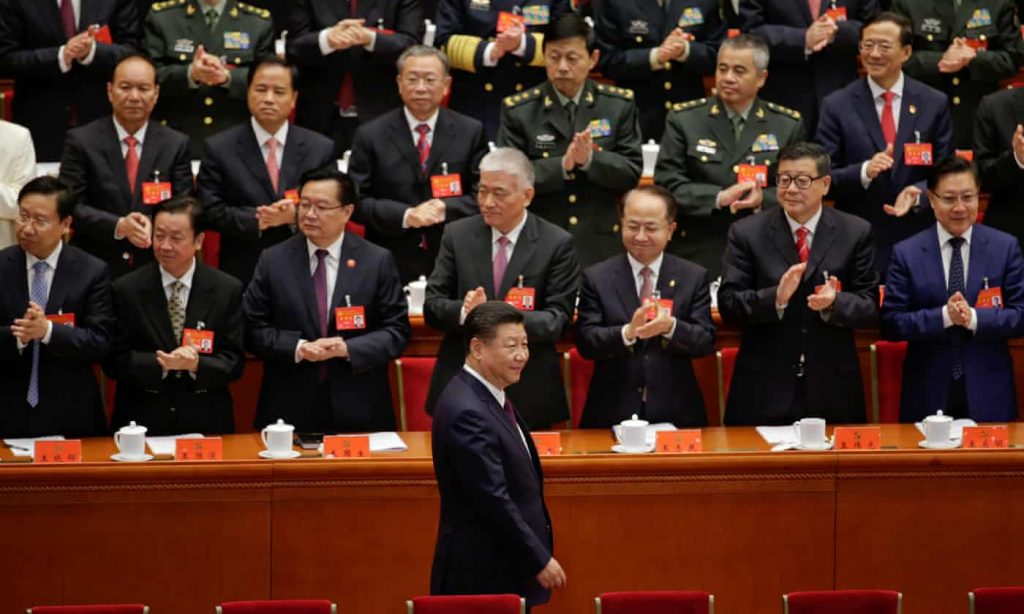By Steven Byers, CPA Senior Economist
Last summer, Chinese officials began talking about the liberalization of Chinese markets, in response to criticism of the highly nationalist and protectionist Made in China 2025 (MIC2025) strategic plan. That was in response to growing trade tensions with the US, and other foreign governments and businesses. Flying under-the-radar, however, the actions of China’s provincial governments indicate that inside China it is full-steam ahead with initiatives at the heart of the MIC2025 master plan.
Twelve percent of all the provincial government policies on implementation of MIC2025 have been published since May of 2018. In a recently published report[1]the US Chamber of Commerce and the American Chamber of Commerce in China (AmChamChina) describe the policies, laws, regulations and practices of regional governments that in effect are a continuation of forced involuntary technology transfer. Targeted industries include: robotics, technology and innovation, automobiles, new energy vehicles, medical, industrial technology, internet+, basic science and technology, artificial intelligence, advanced manufacturing, new energy technology (fuel cells), data and information, information and communication infrastructure, research & development, and cloud computing.
Two specific cases highlight the extent in which Chinese provinces are instituting policies that are aligned with MIC2025 and inhibiting foreign competition: The first is the Anhui province located inland in eastern China. On May 6, 2018 the regional government published “Notice of the Anhui Provincial Department of Science and Technology on Printing and Distributing the Implementation of Several Policies Supporting Science and Technology Innovation,” which describes a subsidy policy for companies to buy R&D and equipment to increase indigenous innovation capability; lists “possession of indigenous IPR” as a requirement to obtain financial support; supports the acquisition of advanced technology from outside the province for transfer and industrialization; and calls for the subsidization of R&D, talent acquisition, insurance, major science and technology projects as well as tax breaks for relevant enterprises.
In other words, the province is offering subsidies to Chinese companies contingent on their ability to show they have “indigenous innovation.” That’s a code word for innovation gained from others, typically western companies. If the western company gives up its intellectual property as a condition of doing business in China, we call it forced technology transfer. If the technology comes from the western company without its knowledge, that’s IP theft.
The second case in point is the province of Henan which is located in the middle of the country. Henan issued a policy titled, ”Henan Implementation Plan of Made in China 2025” in February 2016 and updated it with a plan titled, “Henan Three Year Development Plan for Intelligent Manufacturing and Industrial Internet (2018-2020)” in April 2018. The Policy describes initiatives to: deepen the concentration of indigenous information technology in manufacturing; create a “white list” of priority projects and industries that will receive preferential support from financial institutions; expand government loans and reduce financing costs to local enterprises; provide tax concession for importation of equipment and R&D in the high tech sector; provide financial support and government procurement services to local industry in order to move technology infrastructure to the cloud; promote indigenous innovation and intellectual property rights.
Henan’s policy, like many other provincial policies, is clearly aimed at subsidizing local industry so that they have a competitive advantage over foreign business.
The approach of China’s provincial governments involves promotion of the MIC2025 key industries through local research and development, innovation and ownership of intellectual property. They hope to achieve these goals using financial support (direct subsidies, venture capital and equity investments, specialized funds, credit guarantees, etc.) and regulatory platforms (standards setting), preferential tax and insurance programs, legal and administrative support pertaining to patent and trademark applications, procurement programs involving equipment and technical expertise, industrial and research & development clusters as well as demonstration zones for MIC2025 products, infrastructure (utilities and transportation systems, information platforms), innovation centers throughout China to assist with (technology development, basic research, smart manufacturing and material development) and support for international technology transfer organizations, and relaxation of private investment restrictions.
In response to these egregious non-competitive policies, the U.S. Chamber of Congress and the American Chamber of Commerce in China recently issued a 143-page report outlining guidelines for American negotiators in the China US trade talks. Briefly, the document states, “An Agreement with China is ‘urgently needed’ to ensure China addresses harmful government policies, such as those designed to “foster national champions, both state-owned and state-supported: Opaque foreign investment approval; regulatory policies, and enforcement practices designed to help domestic companies and achieve industrial policy goals; non-commercial behavior of SOEs and other actors in the marketplace, which act under not only government but Party influence, that often impairs foreign investors’ ability to both access the market and realize the value of their investments.”
The shift of MIC2025 to the provincial government level risks a continuation of Beijing’s history of broken promises and hiding its intentions. Any agreement the Trump administration reaches with China to rebalance trade, stop wrongful technology transfers and address predatory economic practices will have to reach beyond the central government to provincial governments as well as state-influenced companies.
[1] US Chamber of Commerce and the American Chamber of Commerce in China, Priority Recommendations for the US-China Trade Negotiations, January 16, 2019 https://www.amchamchina.org/uploads/media/default/0001/10/cb7aaf550a515e8d6af75b1cee200b6531426ee1.pdf.













